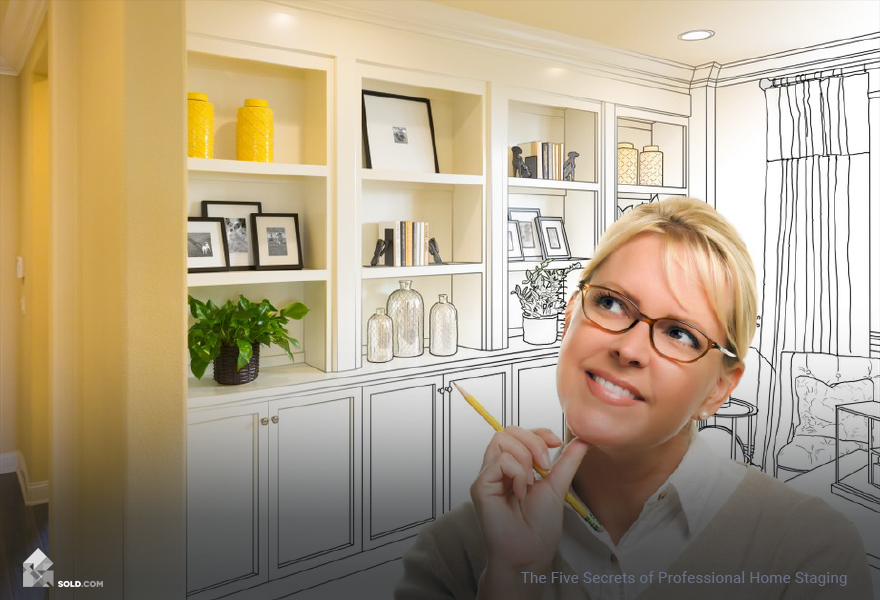
When thinking about how to sell your house, staging is often touted as the key. And the fact is that it can be very effective when it comes to making your home look livable, attractive, and inviting. Read on to learn five secret home staging tips for sellers from the experts.
Home Staging Tips for Selling a House
Disclaimer: Not every staging secret will work equally in every home. Your mileage may vary, so the best thing to do is run the information by your own agent and home stager.
Think Scale, Texture, and Tone
Here comes the Goldilocks theory: nothing too big or too small, but rather pieces that fit the room just right. Scaling is crucial here: if you put a tiny four-top table in a cavernous dining room, it not only fails to show off the room’s purpose but makes its size seem just a bit ridiculous. Conversely, a huge china cabinet in a minuscule living room makes the place feel squeezed and uncomfortable. You’ve got to strike a balance.
Meanwhile, texture and tone are just as crucial as scale. The texture is key in terms of not mixing clashing patterns willy-nillly and finding the right note for the room; the tone is much the same when it comes to colors and lighting. It’s all about what works for space.
Don’t Overdesign
The design is like makeup: it shouldn’t overshadow but rather enhance. Spade and Archer Design Agency founder Justin M. Riordan used another metaphor when describing this art to realtor.com.
“Home staging is like being a backup singer to the house, which is the star,” Riordan said. “As a backup singer, you have to be good, but, girl — do not overshadow Miss Tina Turner.”
Simplicity is king here when it comes to your furnishings, decor, and tiles. Some spaces should remain blank. It’s not only okay, but it’s also better.
And Don’t Over-Fake
It’s tricky to make your home look lived-in when it’s actually vacant, but run from suggestions of inflatable beds or bowls of fake fruit.
“Fake plants, fake food, fake TV screens and computers, and most of all, blow-up mattresses,” Riordan told realtor.com. “Every time (buyers) see a fake item, they are reminded that this is not real, this is not achievable, and this is not their new home.”
Keeping it real is always right. Just make sure that the unread newspapers are picked up from the floor.
Take a Lesson from Writing
Show don’t tell, isn’t only a rule for fiction — it’s a must for home staging. When trying to figure out how buyers are going to visually perceive your home, understand that you can reveal each room’s intention and potential not only with furniture but with smaller items such as throw pillows and ottomans, which give a sense of luxury.
Make sure each room has a purpose (Link to article on this). Buyers shouldn’t have to guess that this is where you keep your spare socks, batteries, and that treadmill you bought but never used. Guide them to understand a room’s possibilities, but don’t hit them over the head.
Your home stager is a great resource for giving rooms purpose. Don’t be shy about asking them any questions you might have.
Use Some Finer Elements
Some things are worth splurging on — for example, nice bedding and large, impactful art that accentuates ceiling and wall height. In addition, music and fragrance can also add dimensions that buyers will appreciate.
Don’t go too nuts here, though, you can make mistakes when renovating a home or staging it. You don’t want to verge on the whole over-decorated aspect. Play it simple and you’ll be fine.
In fact, keeping it simple but elegant throughout the whole staging process should be your goal. Subtlety is king here. If you have any questions, ask your agent.

